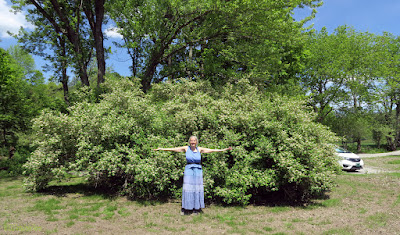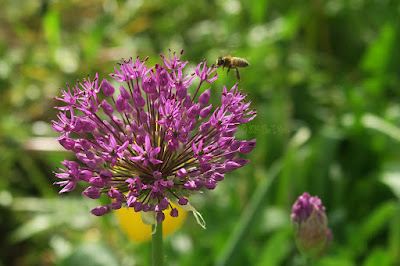Burdock
(the plant with the purple flowers in the foreground, is Heal-all)
Burdock is a large, robust plant, easily recognized by her bristled purple flower heads and broad, ruffled leaves. The leaves can be huge, up to 2 feet long and 1 foot wide. They remind some people of rhubarb plants, but unlike rhubarb’s leaves, burdock leaves have a felt-y, fuzzy texture and are whitish on the undersides. The margins of the leaves are wavy, almost ruffled. Burdock is a biennial, producing a massive rosette of leaves in the first year, then completing its life cycle by flowering (large, purple thistle-like flowers) and making burdock seed in the second year. The deeply excavating taproot is edible during the first year of growth.This wild weed lives two years, producing a 4 - 5 foot tall flower stalk during its second summer. The flowers turn to the seed burs that give the plant its name. The burs, with their hooked tips, are said to be the inspiration for Velcro.
Fresh burdock root is delicious in soup or stew. Prepare it as you would carrots and add it to cooked dishes. Harvest the long root in fall and spring, or in the winter if your ground doesn’t freeze and you can find the plant after its leaves have died down. The leaf may be picked as needed for poulticing or tea as soon as it reaches sufficient size. Moderate harvest of the leaves will not deter root development. The immature flower stalks are another excellent vegetable this common plant provides. Similar to the Italian vegetable cardoon, burdock stalks should be harvested before the plants flower, which is usually in mid to late spring.
Burdock is a popular herbal medicine that can help regenerate liver cells, is a blood cleanser, diuretic, a topical remedy for skin problems such as eczema, acne, and psoriasis, and inhibits cancer.











































